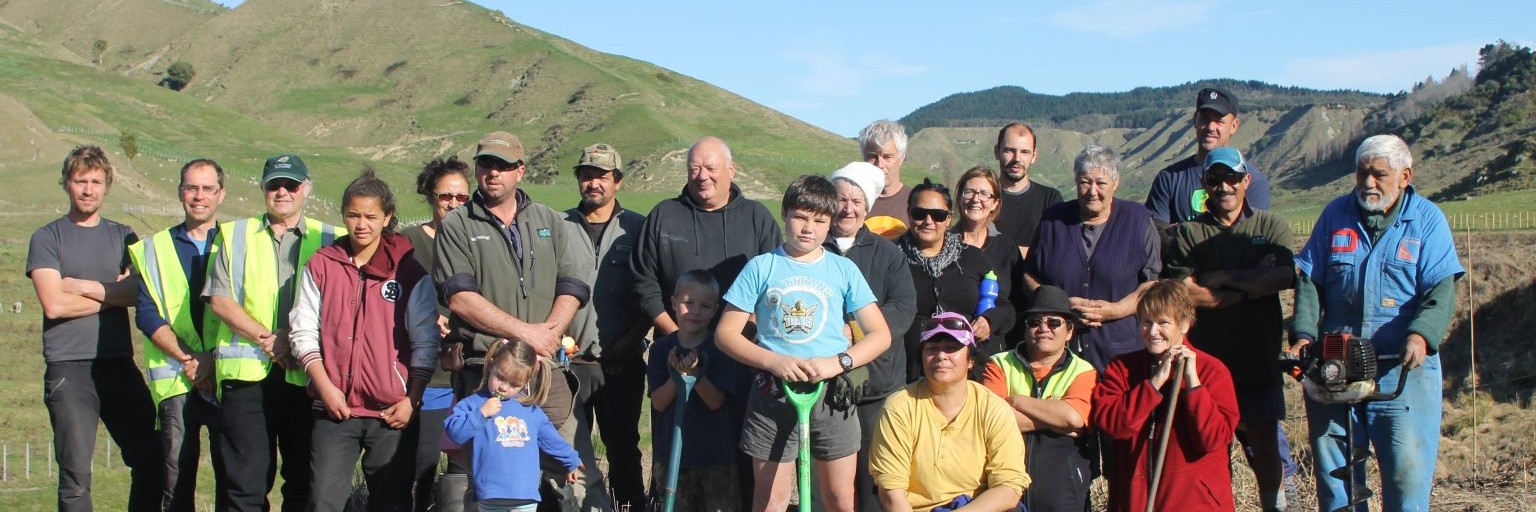New Mahia walkway celebrates the return of fish to awa
Te Aratia Walkway opening ceremony details
Te Aratia Walkway straddles the Mahia Peninsula, linking its eastern and western sides. Some locals call it the Mahia Coast-to-Coast.
This week it celebrates over a decade of work the community has put into building it with an opening ceremony on Thursday, 8 December.
Marae leadership
Project coordinator Nicolas Caviale-Delzescaux says the walkway owes its vision to leadership from Tuahuru Marae and Kaiuku Marae. Kathleen Mato of Ngāti Rongomaiwahine was an inspiration as chair of the Whangawehi Catchment Management Group when it started in 2008. Mato was a rangatira from Tuahuru Marae.
“The people of the two marae had a lot of wisdom and vision. Landowners followed that vision to restore the awa to pristine. The first planting took place in 2014. And ever since, we have been building our restoration program. The walkway was the cherry on the pudding, as we say in French,” says Caviale-Delzescaux.
Restoring the awa
Caviale-Delzescaux says the restoration project is an amazing mahi undertaken by the landowners, people of the two local marae and the wider community. The project has brought the birds back, and the native fish have returned.
“It’s a huge restoration program. We have retired over 150ha and planted over 250,000 trees. We have received international awards for the work we have done. But until we built the walkway, we could not share it with anybody.”
“The profound thing is that landowners and local hapū have opened their doors to share the benefit of a restored environment with the wider community, with all New Zealanders.”
Crossing the land
The walkway sits entirely on private land. The first 6 km meanders through farms, following the riparian planting alongside the Whangawehi River. Then it comes to a whare built six years ago as a place for people to stop and hold wānanga. Volunteers have planted flax for weaving, creating a place that connects visitors and the environment. The second half of the walk winds through commercial forestry of redwoods, pines and cypress. Finally, the trail descends the hill to beautiful Mahia Beach on the peninsula’s west side.
Caviale-Delzescaux says that after COVID-19, New Zealanders need these spaces to reconnect, with our environment and with our past, through the walkway’s archaeological sites.
A team effort
The restoration project began after news that a wastewater treatment plant would be built in the headwaters of the Whangawehi River. Local people were worried about the plant’s location and saw an opportunity to protect the awa’s water quality.
“Tuahuru and Kaiuku marae saw an opportunity,” says Caviale-Delzescaux. “They said, ‘hey, water quality is declining. We, the community and the landowners have an opportunity to do something’. And that’s amazing because now Mahia is renowned for clean water. You can swim and not become sick.”
With the leadership from the two marae, other agencies got involved. Among them, Herenga ā Nuku Aotearoa provided $25,000 for surveying and legal costs to secure walkway access to the land. It also registered the walkway easement over the land, worked with the landowners and provided advice and support to the project team and the council.
The next step is bringing in new young people with exciting new ideas.
There is a lot more work yet to be done: tourism ventures, pest control and maintaining the walkway. These are all stepping stones for the future.
“It’s all been driven by modest people who understood that if you focus on the same vision, you can work together, and that’s it. These two marae were wise enough to see the end goal — a restored awa and healthy water for fish again.”

